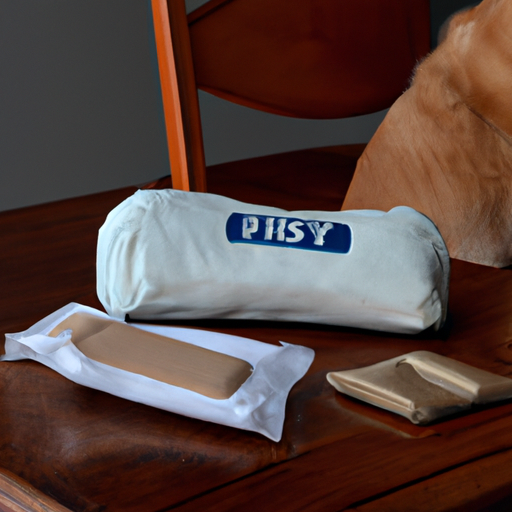The Unseen Challenges of Pet Care
You’ve wrapped your life around the furry friend that has become a part of your family. You’re a caregiver, always looking out for the best interest of your pet. You know the joy of their playful antics and the warmth of their companionship. But with that love comes a responsibility, especially when that wagging tail gets into a scrape.
The next time your dog gets a wound, you might be wondering how to clean it. This is a crucial step in the healing process. But worry not, we’re here to guide you through it.
The Essentials of a Dog First-Aid Kit
Every pet owner should have a basic first-aid kit ready. A well-prepared kit helps you to react quickly and effectively in the face of an emergency. Here’s what your kit should contain:
- Antiseptic wipes or sprays: These are essential for cleaning wounds.
- Hydrogen Peroxide solution (3%): Not only for cleansing, but it can also induce vomiting if your pet ingests something toxic.
- Sterile saline solution: This is useful for flushing out wounds or eyes.
- Tweezers: To remove any foreign objects from the wound.
| Dog First-Aid Kit Items | |
|---|---|
| 1 | Antiseptic wipes |
| 2 | Hydrogen Peroxide (3%) |
| 3 | Sterile saline solution |
| 4 | Tweezers |
Cleaning Your Dog’s Wound: A Step-by-Step Guide
When your dog gets hurt, your first instinct might be panic. But remember, you need to stay calm for both of you. Here’s a step-by-step guide to cleaning your dog’s wound:
- Secure your dog: Ensure your dog is calm and secure. This might require a second person to hold the dog.
- Assess the wound: Determine the severity. If it’s severe, rush to the vet immediately.
- Clean the wound: Use a saline solution or hydrogen peroxide to clean the wound.
- Apply an antiseptic: Once the wound is clean, apply an antiseptic to prevent infection.
- Bandage the wound: Use a clean bandage to cover the wound. Make sure it’s not too tight.
The Art of Patience
Healing takes time. Even after you’ve cleaned and bandaged the wound, your job as a caregiver isn’t over. Keep an eye on the wound, change the bandages regularly, and make sure your dog isn’t licking or biting at it.
If you notice any signs of infection like pus, redness, swelling, or if your dog seems overly lethargic, don’t hesitate to contact your vet.
Frequently Asked Questions (FAQs)
Q: Can I use human antiseptic on my dog?
A: Yes, but be sure it’s alcohol-free. Alcohol can cause unnecessary pain and harm to your pet.
Q: How often should I change the bandages?
A: It depends on the severity of the wound. For minor wounds, every two days should suffice.
Q: What should I do if my dog keeps licking the wound?
A: Consider using an Elizabethan collar (the cone) to prevent this.
Remember, your dog depends on you. You’re not just their friend, you’re their caregiver. It’s up to you to ensure they remain happy and healthy, even when accidents happen.



